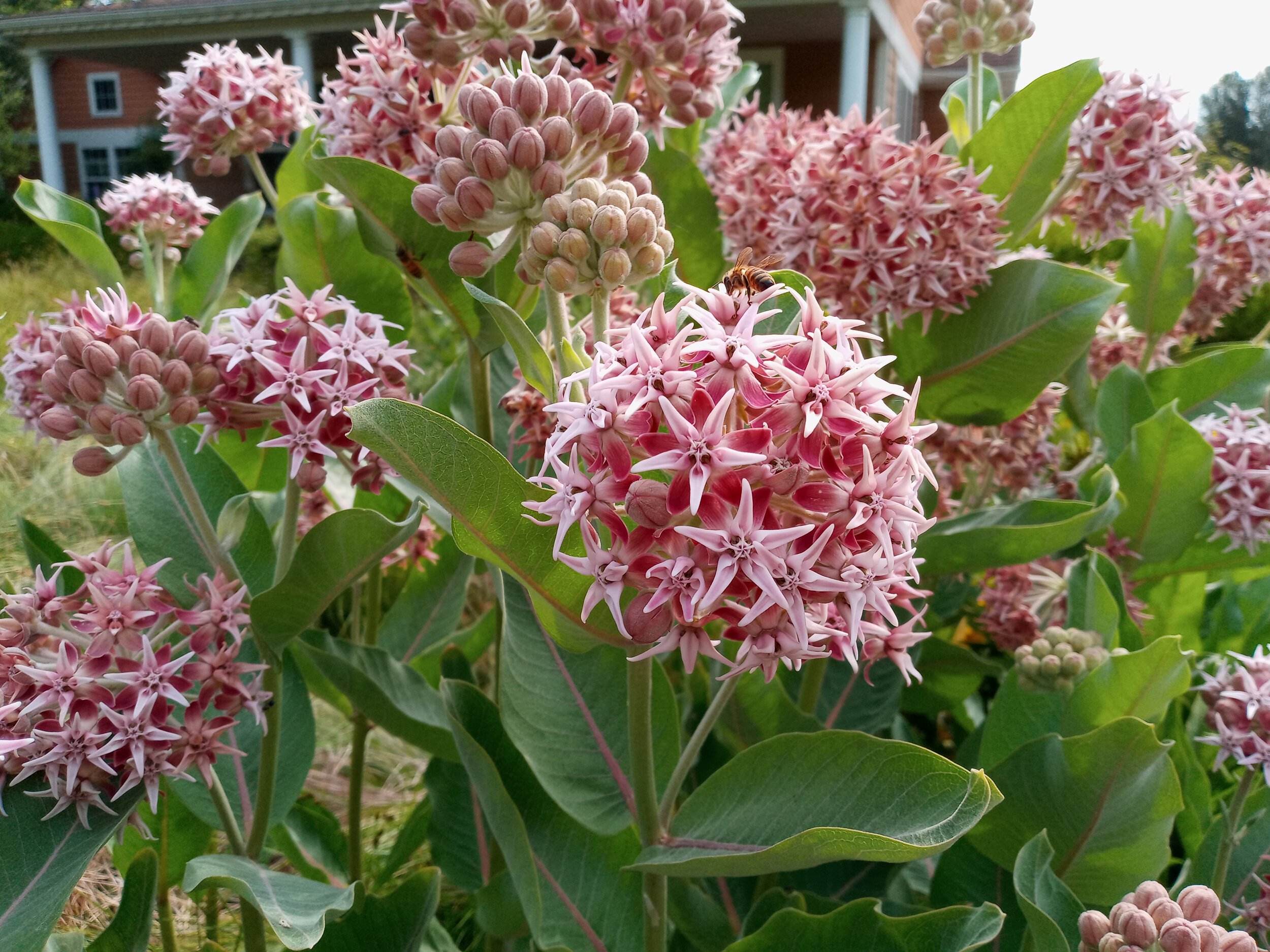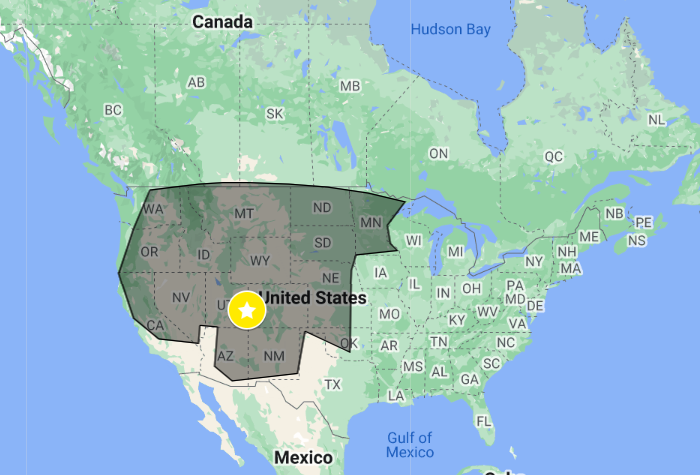One Small Step for Seed, One Giant Leap for Milkweedkind
Showy Milkweed – Asclepias speciosa
On a warm late-summer day, several years ago, a small oval was released from a showy milkweed in the north end of Castle Valley. The wind was swirling that day, and it pushed the seed through the air, before it landed on the south-facing side of a small house at 270 Pope Lane. When the seed landed, the dry clay soil greeted it with open arms. Soon after, the seed began sending roots downwards and a stalk upwards. Before a year passed, the seed had sprouted into a small but impressive showy milkweed. The first of its kind on 270 Pope. One small step for seed, one giant leap for milkweedkind.
Once the first stalk grew robust enough, it began to send out smaller roots, called rhizomes, horizontally, much like aspen does. These roots eventually sprouted upwards too, resulting in a small clump of milkweed. At first glance, one might not expect this small plant to be able to survive at 270 Pope. The air is hot and dry, and the ground is cracked by the lack of water in the desert climate. But these are the exact conditions that showy milkweed likes to live in. In the summertime, these small plants only need water a maximum of twice per season, and they can survive with close to no water for the entire season. But don’t let their current size fool you. Fast forward to 2022, and these plants are around four feet tall. Fast forward a few more years, and they will be close to 6 feet tall.
Showy milkweed is an impressive plant at full size. Growing together in clumps, the stalks have leaf pairs opposite each other, alternating on either side of the stalk. These leaves are heavy and soft, yet durable, almost like leather. They contain a thick liquid, called a latex. The latex has a chemical in it called cardenolide, which is toxic to many species. This is the milkweed’s defense mechanism. Monarch butterflies, however, are resistant to this chemical. They flock to milkweed clumps to lay their eggs.
One day, a monarch flew to this particular showy milkweed at 270 Pope. It laid one singular egg on the plant, near the top, on the underside of a leaf. All monarchs do this. Five days later, the egg hatched a larva. For the next ten days, the larva feasted on its own egg for sustenance, before turning to the soft leaves of the milkweed. While most insects do not eat milkweed because of the toxic latex, the monarch larva loves it. After the larva grew into a caterpillar, it faced a choice that all caterpillars face: leave the plant or stay for metamorphosis. This caterpillar decided to leave. Whether it made the right decision we will never know. It may not have survived the dangerous landscape, full of predators and harsh weather.
In 2022, the flowers of the milkweed bloomed in spring/early summer. Its flowers faced away from the reddish orange house, pointing towards the sun, in a beautiful crownlike mosaic of white, pink, and purple. The flowers are long gone by mid-September, withered away in the unrelenting sun. After the flowers bloomed, seed pods developed. These pods are hook-shaped and look almost spiky, as if Captain Hook upgraded his hook for extra intimidation. In late summer to early fall, these pods too crack under the intense heat and sun. When they crack, the seeds are let loose, carried by the wind to different five-acre plots throughout Castle Valley. Before this happens however, the flower must be pollinated by an insect.
One day in the summer of 2022, in the middle of June, a bee was attracted to the milkweed. The bee landed on the top of the flower, and its leg slipped into one of five vertical slits. The milkweed then attached a pollen sac to the bee’s leg, before releasing it. The bee happily flew off to bring the pollen to another plant. On the same day, another bee visited the milkweed. Carrying pollen from another plant, this bee landed on top of the flower. One of the bee’s legs landed in a slit, and the milkweed latched on. Desperate to escape, the bee put up a mighty struggle and flew away, but not before losing its leg and all of the pollen attached to it. But despite this venus flytrap-like design, the showy milkweed is not a vicious plant. It plays a critical role in the ecosystem, providing habitat for everything from butterflies to hummingbirds to native bees. Caterpillars even get protection from milkweed, because they pick up its toxins, making them taste bad to predators. And of course, the biggest benefit of showy milkweed, at least in the eyes of a human, is its ability to provide habitat and food for the iconic, large monarch butterflies.
So now our showy milkweed continues on, living through the unforgiving sun and this years’ climate-change induced drought. On 270 Pope, the milkweed is ever growing, searching for the next direction to send its rhizomes, pollen, and seeds to propagate its population.
By Henry Roller



